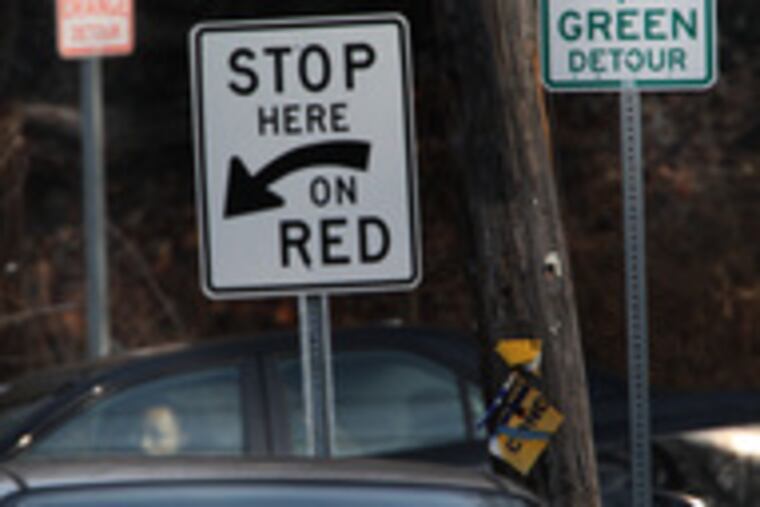PennDot targets tie-ups with color
PennDot's rule of thumb is that for every five minutes an incident slows or blocks traffic - whether it be a jackknifed tractor-trailer or a car fire - there is a half hour of lingering congestion.

PennDot's rule of thumb is that for every five minutes an incident slows or blocks traffic - whether it be a jackknifed tractor-trailer or a car fire - there is a half hour of lingering congestion.
To reduce tie-ups, the Pennsylvania Department of Transportation has begun erecting color-coded detour signs on highways and byways near interstates and expressways.
Perhaps you've noticed them. The signs are rectangular with a white background, but the border, arrow and the word
detour
are one of several different colors - red, blue, green, brown and orange.
"The idea is that if there's an incident on the interstate or expressway, these signs will tell you where to get off and what route to follow to get back on," PennDot spokesman Charles Metzger said. "It's a way to get around the incident site."
PennDot began installing the signs last month. So far, about 200 have been erected in District Six, which encompasses Philadelphia and Bucks, Chester, Delaware and Montgomery Counties.
By spring, about 500 signs will be in place on roads adjoining the exits of such local interstate highways as 95, 76, 476 and 676. In the next phase, to be completed by the fall, color-coded detour signs will be erected on local roads adjoining the exits of such limited-access expressways as 202, 422 and 309, Metzger said.
The colors of the signs have directional meaning, PennDot district traffic engineer Lou Belmonte said. Blue means north, red means south, green means east and orange means west. But in some areas alternate colors may be used, especially when detour routes overlap. "Nothing is etched in stone," Belmonte said.
It works like this: Say you're heading east on the Schuylkill Expressway and traffic has slowed because of an accident between the Belmont Avenue and City Avenue exits. Alerted by an electronic message sign or radio traffic report, you could get off the expressway at Belmont Avenue, where green detour signs would guide you along local roads back to the expressway at City Avenue, so you could continue your journey east.
"This is really an extension of the emergency-preparedness plans that were formulated after 9/11," Metzger said. "Our goal was to identify routes people could take not only in case of a major emergency or disaster, when people have to be moved in and out of areas quickly and efficiently, but also when a crash or winter storm forces the closing of an expressway or interstate."
Last Valentine's Day, a winter storm caused a monstrous tie-up on a 50-mile stretch of I-78 in eastern Pennsylvania, as well as on Interstates 81 and 80. Hundreds of motorists spent a frigid night in their vehicles, many without food or water, after the storm dumped a mixture of snow, sleet and freezing rain.
Authorities were criticized for not shutting entrance ramps sooner and directing motorists to alternative routes.
Plans already were afoot to expand the state's system of color-coded detour signs, but that epic snafu, which embarrassed Pennsylvania and elicited an apology from the governor, underscored the necessity of the effort and added to its urgency, PennDot spokesman Steve Chizmar said.